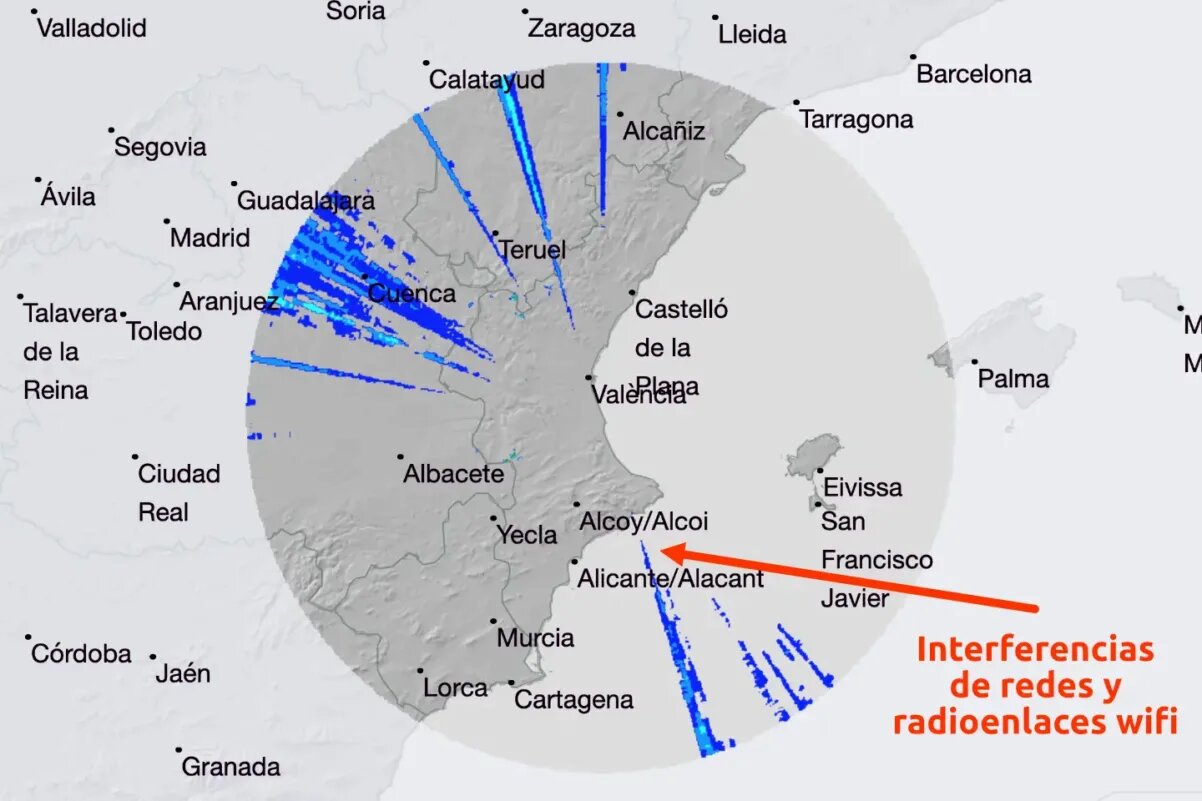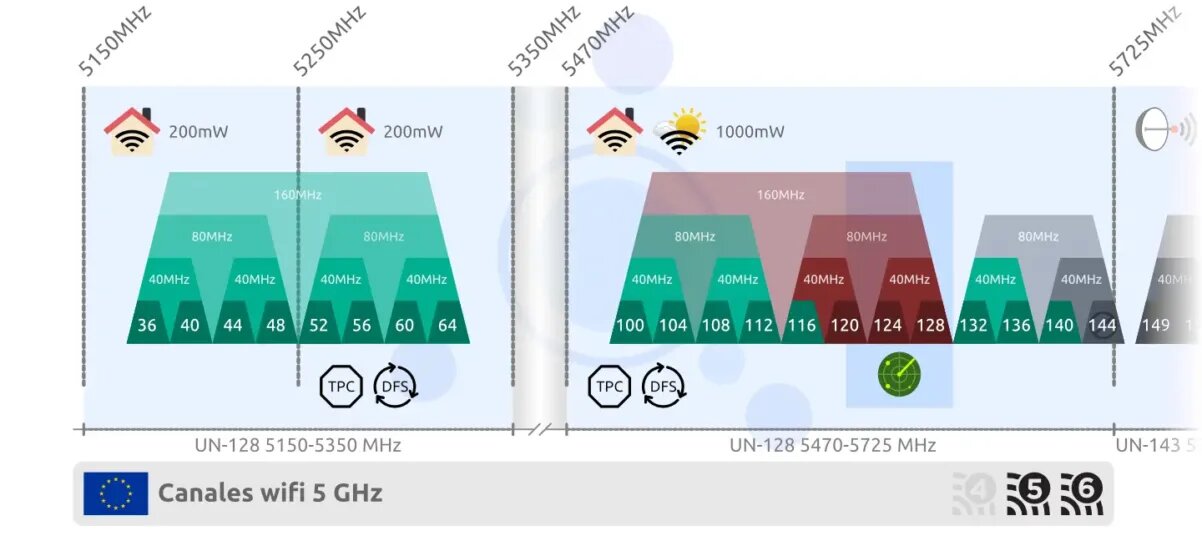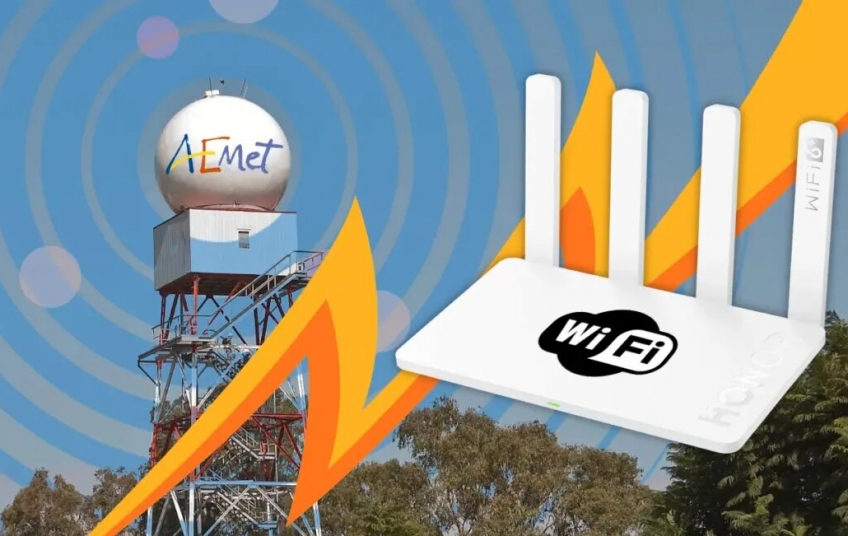Europe will require manufacturers of Wi-Fi routers and access points to prevent the installation of firmware or the change of country to bypass the DFS protection that prevents Wi-Fi from interfering with weather radars. The new regulations that regulate the use of the 5GHz Wi-Fi band also limit the power of Wi-Fi in the car and allow drones to use 4 channels.
The increasingly controlled 5GHz Wi-Fi band
At the beginning of the year, Europe introduced some changes in the rules that regulate how the 5 GHz band is used in the old continent, intensely used together with the 2.4 for Wi-Fi in homes and offices. This band has 19 Wi-Fi channels with many "buts" that mean that for practical purposes we cannot fully enjoy them.
Some channels allow more broadcast power than others, which gives them better coverage. Others must use mechanisms to minimize radiated power. There are those that can only be used in open spaces. Furthermore, in many of them, their use is not guaranteed since the standard forces the router to abandon them when there is a risk of interfering with radiolocation systems.
The DFS (Dynamic Frequency Selection) mechanism, mandatory in Europe, is behind the fact that the router takes more than a minute to start up, that the Wi-Fi is cut off from time to time if you live near an airport, military base or weather station, and even that your router does not let you choose some channels.
The router, governed by the software that the manufacturer has recorded in its firmware, is in charge of managing these details that the user normally does not care about. Since in other continents the regulations are different from what we have in Europe, some of these limitations can be avoided simply by modifying the country for which it is configured. There are also free firmwares that allow you to configure advanced parameters and disable DFS, broadcast with more power than allowed or access illegal Wi-Fi channels in Spain.

The EU wants to stop this practice, which is harming essential services such as weather radars. You only need to take a look at the latest reflectivity map of an AEMET regional radar like the one in Valencia to see how the interference is seriously affecting its readings.
The modification of the CNAF that the Ministry of Digital Transformation is finalizing will rectify the UN-128 that regulates the 5GHz band to adapt it to the instructions that arrive from Europe. One of the novelties is for the manufacturers of Wi-Fi routers and access points, which will not be able to allow the change of country to one that does not require DFS protection, such as Russia or India. The other novelty may have an even greater impact, since manufacturers are forced to prevent the installation of firmware that allows DFS to be disabled.
The user will not have access to the settings (in hardware or software) of the WAS/RLAN related to the DFS if the modification of those settings causes the WAS/RLAN to no longer comply with the requirements of the DFS. This includes: a) not allowing the user to change the country from which they are operating or the frequency band of operation if that would cause the equipment to no longer meet DFS requirements, and b) not accepting software or firmware that causes cause the equipment to no longer meet DFS requirements.
Some router operating systems such as Mikrotik's RouserOS allowed to alter the behavior of DFS with the option "dfs-mode" that no longer exists in the current version. OpenWrt is a popular open source operating system based on Linux, compatible with many models of home routers that, when installed, allow you to control Wi-Fi parameters in detail without limitations.
Drones will be able to use Wi-Fi channels
The new regulation of the 5GHz band also brings some changes to the use of these frequencies indoors, outdoors and in vehicles. Thus, the first 4 channels of the band, which could only be used indoors, may be used outdoors as long as it is not a fixed installation, which rules out their use for point-to-point links. They can also be used in train cars and road vehicles, although limiting the power to 40 mW.

These 4 channels are the ones that host the most Wi-Fi networks in urban environments, but they will have a new tenant, since they can also be used by drones, which until now had been prohibited from this band.





